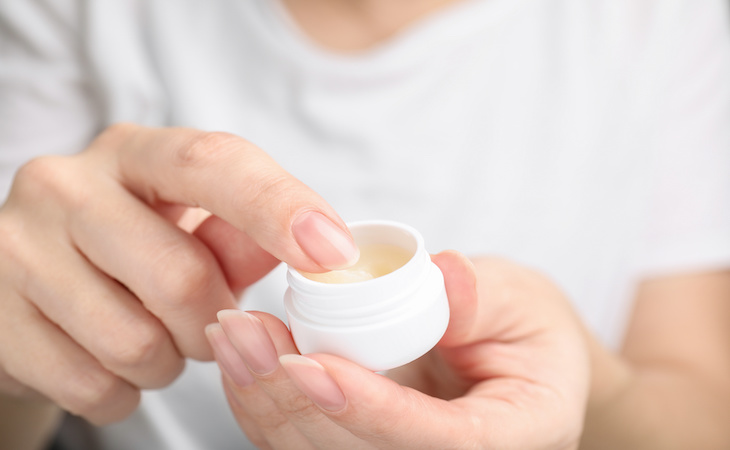
Slugging is a skincare technique where a layer of petroleum jelly is applied over nighttime products to lock in moisture. It boosts hydration, enhances product efficacy, and improves skin texture. Best for dry or irritated skin, it may cause breakouts in oily or acne-prone skin. Use sparingly and selectively.
I’ll try basically anything in the name of beauty. I’ve been known to slather on a cocktail of masks, serums, and moisturizers throughout the day or get lymphatic drainage facials. I even got a facial inside a steam tent once.
Is it any wonder, then, that I’m intrigued by the practice of slugging? This skincare trend has gained popularity in recent years, thanks in large part to it going viral on TikTok. But does slugging work?
As someone whose skin tends toward the drier side, I definitely wanted to get to the bottom of whether slugging overnight is actually good for your skin.
To do that, I spoke with Kristine Evans, a medical esthetician at Seaside Skin Care in San Clemente, Calif., to get her thoughts and expertise.
Keep reading to find out everything you need to know about slugging, including how to do it while you sleep and whether it really, truly works.

What is slugging?
First off, let’s talk about what slugging actually means. At its core, slugging skin is the practice of slathering petroleum jelly on your skin overnight.
“Slugging is a skincare trick where you apply a thick, occlusive layer—usually petroleum jelly or a balm—over your nighttime skincare routine to lock in moisture,” says Evans.
The term “slugging” comes from the fact that adding this slick jelly to your face makes it look, well, slimy—almost like snail mucus. (Yum, right?)
But doing so can help people whose skin is super dry. “It’s especially great for dry, dehydrated, or irritated skin that needs extra TLC,” says Evans.
“Slugging is a skincare trick where you apply a thick, occlusive layer—usually petroleum jelly or a balm—over your nighttime skincare routine to lock in moisture.” – Kristine Evans, a medical esthetician at Seaside Skin Care
How does slugging work?
Slugging overnight helps to seal all of the moisture into your skin so you can reap the benefits while you get your Z’s.
This happens by applying an occlusive—aka a moisturizing ingredient that adds a layer to your skin and helps protect it. Think of occlusives like slick plastic wrap—petroleum jelly and the like.
“The occlusive layer creates a barrier that keeps moisture from evaporating while you sleep, helping your skin absorb all the hydrating and repairing ingredients from your serums and creams,” says Evans. “When you wake up, your skin feels softer, plumper, and more nourished.”
Benefits of slugging overnight
Does slugging work? In a word, absolutely! As you may imagine, adding slugging into your evening skincare routine comes with a host of potential benefits.
According to Evans, those benefits can include:
- Maximum hydration: Deeply hydrates and restores dry or compromised skin
- Efficacy of products: Enhances the effectiveness of your serums and moisturizers
- Super smooth skin: Leaves skin looking smoother and glowier in the morning
- Skin protection: Helps protect against irritation, especially if you use strong actives like retinoids
Drawbacks of slugging overnight
While skin slugging while you sleep can help your skin become dramatically softer and smoother, it can unfortunately have a couple drawbacks too.
Depending on your skin type, slugging overnight can actually be detrimental to your skin, so it’s important to know your skin inside and out before you try this practice.
Evans says slugging is great for dry skin but may not work well for oily skin or acne-prone skin.
“Occlusives can trap oil and bacteria, potentially leading to breakouts,” she cautions. “If your skin tends to get congested, slugging all over your face might be too heavy.”

How to try slugging overnight
Now that you’ve learned more about what skin slugging is, it’s time to try it out! Here are some top tips from Evans to help you do it right.
Step 1: Hydrate
Before you start slugging, be sure to hydrate your skin. “Apply a hyaluronic acid serum and a moisturizer before slugging to maximize hydration,” recommends Evans.
Step 2: Pick the right product for your skin
Evans suggests a few different occlusives for maximum impact while slugging overnight. “Classic Vaseline works,” she says. “But if you want something a little lighter, CeraVe Healing Ointment or Aquaphor are great options with added skin-loving ingredients.”
Step 3: Keep it light
There’s nothing worse than waking up and seeing skincare stains all over your beautiful pillowcases and sheets. Be sure you go a little light with the application. “Less is more,” says Evans. “You don’t need to slather on a thick layer—a thin, even layer works just as well.”
Step 4: Go to bed—and wash up in the morning
Drenching your skin in these hydrating products is really all there is to it! After that, cuddle up under your comforter and get a good night’s rest. Just be sure to wash your face when you wake up in the morning, so you don’t clog it up during the day.
Pro tip: Spot treat
If you have combination skin, you can still try slugging—you may just need to do it more pointedly. “If you have combination skin, try slugging only on dry areas, instead of your whole face,” says Evans.
FAQs
Do dermatologists recommend slugging?
Slugging overnight is recommended by both dermatologists and estheticians for its ability to help bring moisture and hydration back to the skin. In fact, according to Cleveland Clinic, it’s a process that dermatologists say can be especially helpful during the dry winter months.
Evans definitely recommends slugging, especially depending on your skin type. “It’s a game-changer for locking in hydration,” she says.
However, if you have oily skin or acne-prone skin, she suggests skipping slugging overnight in favor of a rich moisturizer. “I’d go for a rich moisturizer with ceramides and hyaluronic acid instead of a full-on slugging routine,” she says.
How long does slugging take to work?
The good news is, slugging overnight can have fairly immediate effects. “Honestly, you’ll notice a difference by morning,” says Evans. “Your skin will feel softer and more hydrated.”
The benefits can actually work further down the line too. “Long term, it can help strengthen your skin barrier,” says Evans. “But if your skin is always dry, it might be a sign that you need to adjust your skincare routine to include more hydrating and repairative ingredients.”
What are the cons of slugging?
So, you’re asking yourself, “Does slugging work?” The answer is, yes. But there are some cons and drawbacks to slugging, especially if you have acne-prone skin or oily skin.
Slathering an occlusive layer onto your skin in these cases can cause clogging, which, in turn, can lead to breakouts, so it’s best to avoid in this case.
What nighttime ingredients are best for your skin? Next, learn about melatonin skincare products and whether they really work.
Jamie Sanders
Jamie Sanders is an LA-based copywriter and blogger with 20+ years of experience in fashion, beauty, and lifestyle. After 12 years in New York City and a brief stint in Pittsburgh, she (finally) relocated to Los Angeles in 2015. Her work has appeared in InStyle, Harper’s Bazaar, Shape, Allure, TODAY.com, and Glamour, among others. She also started her own blog, The Beauty of Life, in January 2007. Over the years, she’s cultivated her obsessions of bold nail polish, candles, Bonne Bell Lip Smackers, Minnie ears, and strappy-heeled sandals. When Jamie isn’t working, you can most likely find her exploring the Los Angeles bar and restaurant scene, traveling, or enjoying time at Disneyland.



